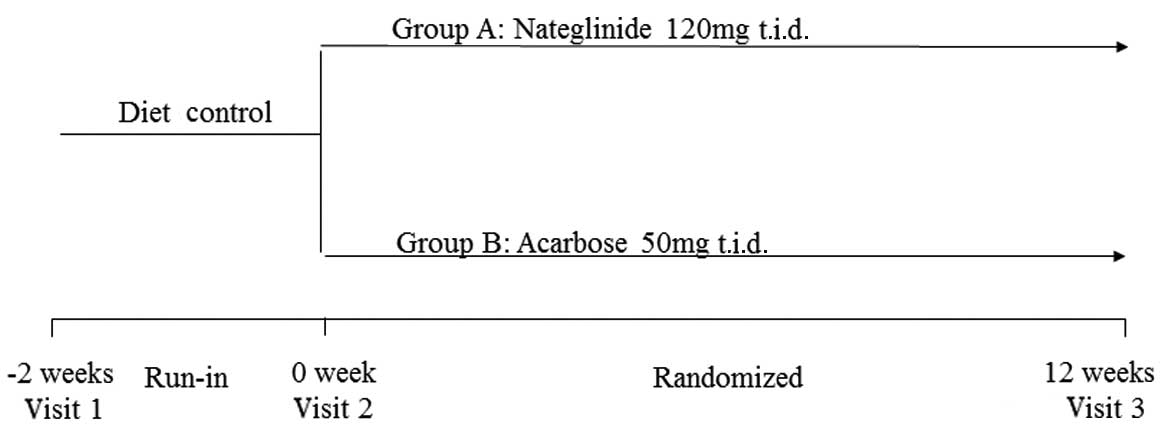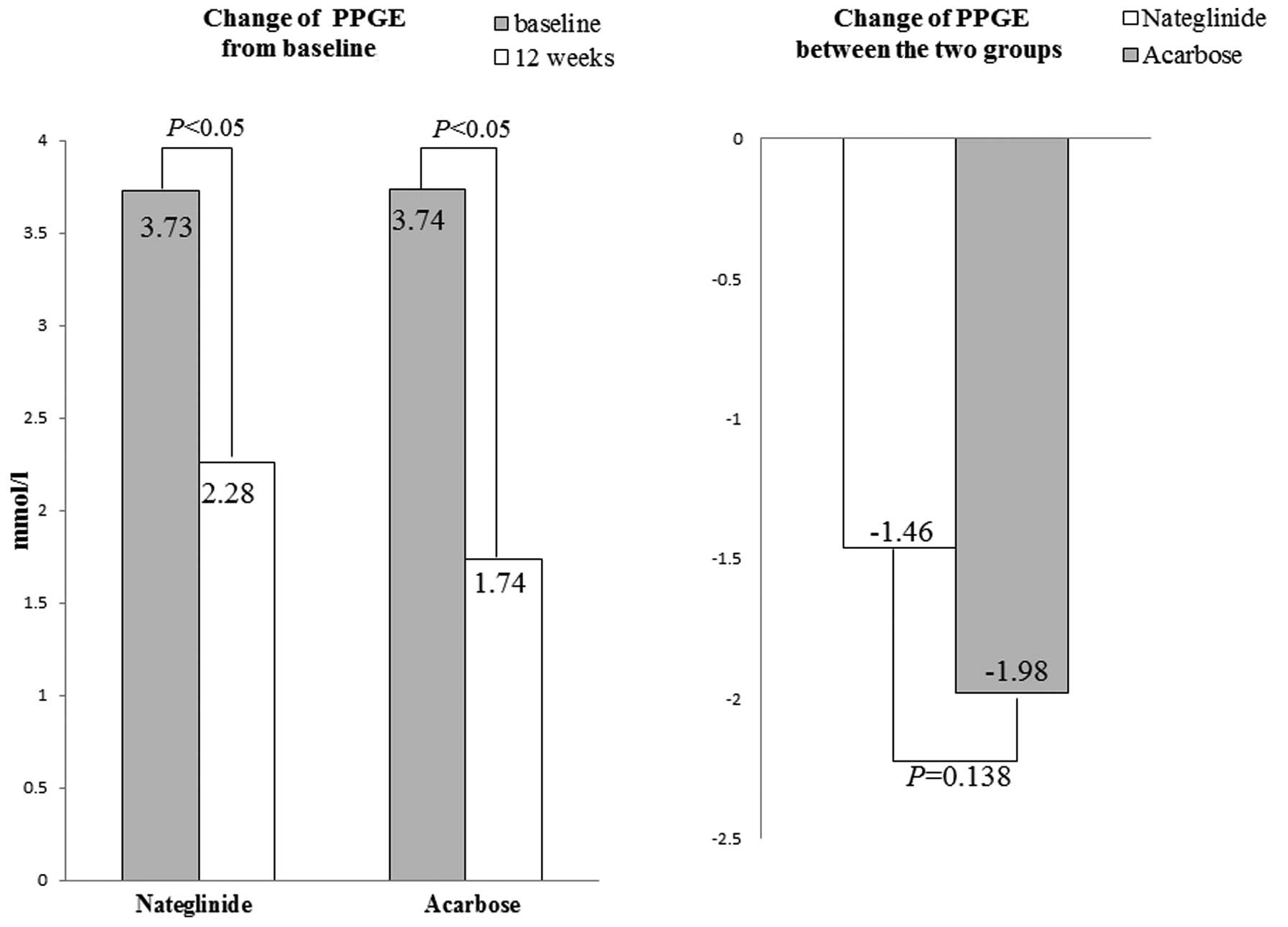Effects of nateglinide and acarbose on glycemic excursions in standardized carbohydrate and mixed‑meal tests in drug‑naïve type 2 diabetic patients
- Authors:
- Published online on: August 7, 2013 https://doi.org/10.3892/br.2013.156
- Pages: 913-917
Metrics:
Total
Views: 0 (Spandidos Publications: | PMC Statistics:
)
Total PDF Downloads: 0 (Spandidos Publications: | PMC Statistics:
)
Abstract
The aim of this study was to compare the effects of nateglinide and acarbose on glycemic excursions and postprandial glucose profiles with different types of meals (standardized carbohydrate and mixed meals) in drug‑naïve type 2 diabetic patients. A randomized, parallel‑group prospective design clinical trial was conducted and a total of 39 drug‑naïve patients (16 males and 23 females, aged 56.7±10.2 years) were enrolled. The patients were randomly divided into group A [nateglinide 120 mg three times daily (t.i.d.), n=19] and group B (acarbose 50 mg t.i.d., n=20). the standardized carbohydrate and mixed‑meal tests were performed at baseline and at the end of study. Continuous glucose monitoring system (CGMS) data were recorded. Various parameters that measure glucose variability were derived from the CGMS data. In the standardized carbohydrate meal tests, the postprandial glucose excursions (PPGEs) were significantly decreased in the two groups after 12 weeks of treatment (P<0.05), whereas the decrease was more prominent in the acarbose compared to the nateglinide group (P=0.138). In the mixed‑meal tests, the mean sensor glucose values [24‑h mean blood glucose (MBG)] were significantly decreased in the two groups after 12 weeks of treatment (P<0.05) and the parameters of glucose excursions, including standardized deviation (SD), largest amplitude of glycemic excursion (LAGE), mean of daily differences (MODD) and mean amplitude of glycemic excursion (MAGE), were reduced in the two groups. However, the decreases in SD and LAGE in the nateglinide group were statistically significant, whereas in the acarbose group only the decreases in LAGE were statistically significant. The efficiency of nateglinide or acarbose in lowering postprandial 120‑min hyperglycemia were similar in the standardized carbohydrate meal test. However, acarbose was more efficient in lowering postprandial 30‑ and 60‑min hyperglycemia (P<0.05) compared to nateglinide. The fasting and postprandial total cholesterol (TC), triglyceride (TG) and low‑density lipoprotein cholesterol (LDL‑C) had a tendency to decrease from the baseline after 12 weeks of treatment with nateglinide, whereas fasting and postprandial high‑density lipoprotein cholesterol (HDL‑C) had a tendency to increase. Acarbose did not affect the fasting or postprandial lipid profiles after 12 weeks of treatment (P>0.05). in conclusion, nateglinide and acarbose effectively improved postprandial glycemic control, although acarbose was shown to be more efficient in controlling early (30 and 60 min) postprandial glucose excursions in the carbohydrate meal test, whereas nateglinide was shown to be superior to acarbose in controlling postprandial glucose excursions in the mixed‑meal test.














